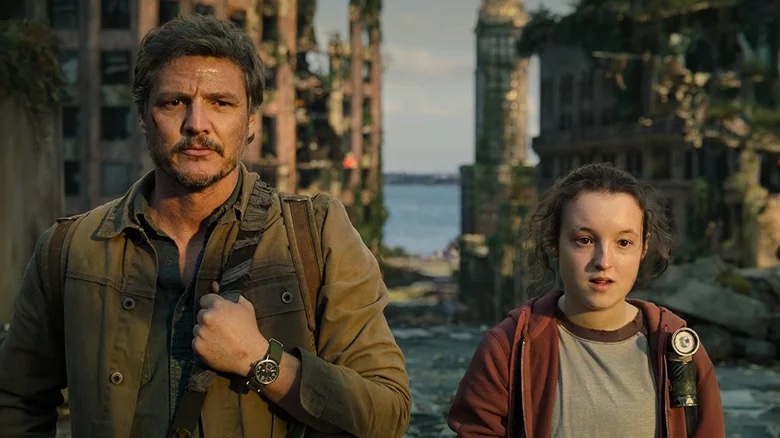Warning: The following article contains minor spoilers for “The Last of Us.”

The hype surrounding HBO’s “The Last of Us”—the long-awaited adaptation of the iconic Naughty Dog game—is well-deserved. Helmed by the game’s writer Neil Druckmann and “Chernobyl” showrunner Craig Mazin, the show has only grown in acclaim and popularity since its premiere. Its unique take on the zombie and post-apocalypse genre has gripped audiences, and though the bar for live-action video game adaptations is extraordinarily low, this show has set a new standard that will definitely be hard to pass.
There’s no praise I can give to “The Last of Us” that hasn’t already been said. The character writing and art direction are the best parts of the show, as they were in the game. The acting is incredible, especially from the two leads, Pedro Pascal and Bella Ramsey, with whom the internet is familiar at this point. The way that “The Last of Us” has impacted both Pascal and Ramsey’s careers is astounding, and I can say with complete certainty that both of them deserve the attention they’ve been getting. Players of the game may find it difficult to separate the characters of Joel and Ellie from Troy Baker and Ashley Johnson’s original voice and motion-capture performances, but luckily, Pascal and Ramsey make the roles their own.
The design of the infected, or “clickers” as they’re referred to, is definitely something to note. Instead of adding CGI fungus to actors’ faces, the makeup and prosthetics team produced every clicker that appears in a close-up from practical effects. In the wide shots of hordes of the infected, there’s not much prosthetic use, but there doesn’t have to be. If we can barely see their faces, a group of actors in motion-capture makeup is fine. It slips by unnoticed, and leaves budget for the scenes that matter the most. Whenever clickers do appear in the face of the camera, it is quite a sight to behold. The practical effects team truly succeeded at creating these beautifully terrifying fungus creatures.
Of course, any fan of “The Last of Us” will tell you that the story isn’t really about the zombies, but the people—and they’re right. Past the series’ fifth episode, not many of the creatures tend to appear. While many took issue with this change from the game, I personally think it worked in the show’s favor. From that point forward, the story shifts from finding a cure to the virus to focusing on Joel and Ellie’s relationship. It spends more time on characters such as Tommy (Gabriel Luna), Riley (Storm Reid), and David (Scott Shepherd). The latter half of this season is more about the different ways that the infection has changed humanity’s psyche, ideology, faith, and relationships.
Mazin and Druckmann clearly devoted time to making a show which would satisfy fans of the game while also bringing new fans into the story. In some cases, storylines that were only hinted at in the game are heavily expanded upon, while key emotional scenes are kept beat-for-beat. In other words, they made just the right amount of changes to keep the story the same, while also reinventing certain aspects of it. I remember when the first trailer was released, while I was excited, part of me wondered why a TV show was necessary when the game already provided plenty of cinematic scenes that already function as an extended movie. But by adding and changing certain storylines that improve upon the original story, this show’s existence is justified.
The series also put in something a little extra for fans of the game. Several minor characters that appear throughout the season are played by the game’s voice actors. Troy Baker, Ashley Johnson, and Jeffery Pierce may no longer be playing the lead roles, but when they show up as James, Ellie’s mom, and Perry, respectively, it’s a pleasant surprise. Merle Dandridge is the only actor to play the same character both in the game and show—Marlene—and it was satisfying to see her doing that role on screen rather than behind a mocap suit. That being said, these cameos never overshadow the stars of the show who truly are incredible. Pedro Pascal’s more vulnerable approach to Joel Miller may raise some eyebrows, but it absolutely works for the medium of television. Likewise, Bella Ramsey’s portrayal of Ellie Williams may come off as somewhat unlikable to viewers at first, but as her character develops along with Joel’s, so does her relationship with the audience.
Whether you played the game and loved it or are just being introduced to the story now, it’ll make little difference. The only thing that might bug some people is that the show does feel a tad bit rushed compared to the game, but it’s nothing that compromises the experience. I did walk away wishing that there had been at least one more episode to flesh out Joel and Ellie even further, but I was more than satisfied with what we got.
Though “The Last of Us” may not be the first amazing video game adaptation overall, it’s definitely the first great live-action one. I imagine many companies will attempt to recapture the effect of this show, and most will probably fail. But who knows, maybe one day someone will create a brilliant adaptation of “Metal Gear Solid” or “Portal.” Until then, “The Last of Us” will remain a high bar to surpass. Given that “Succession” and “Barry” are both wrapping up this year, it looks like this show and “House of the Dragon” are set to take their places as HBO’s headliners.
Nate Wheeler can be reached at nwheeler@wesleyan.edu.


Leave a Reply